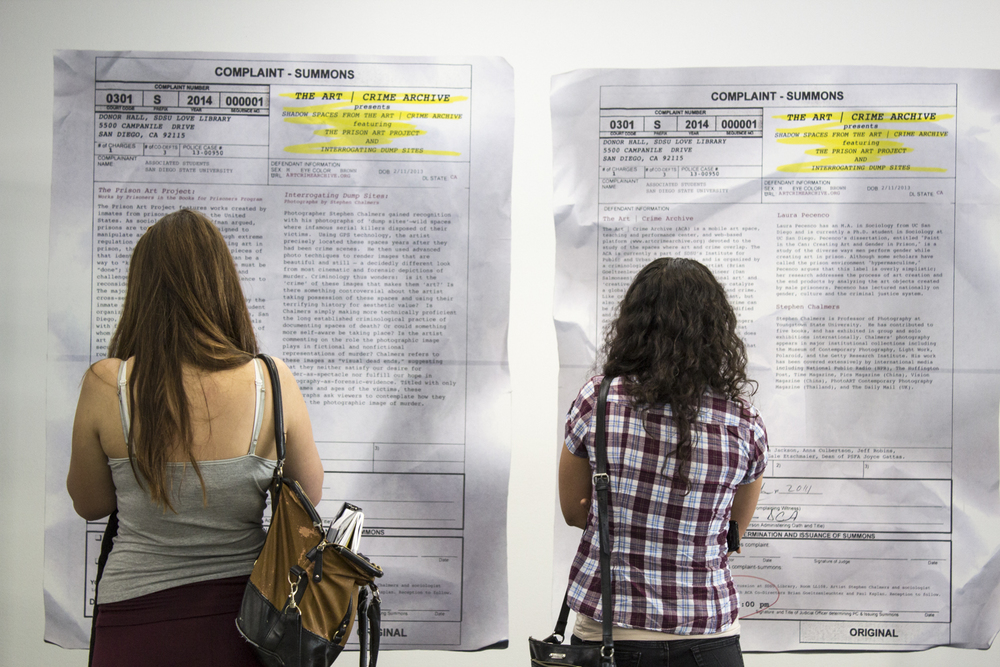
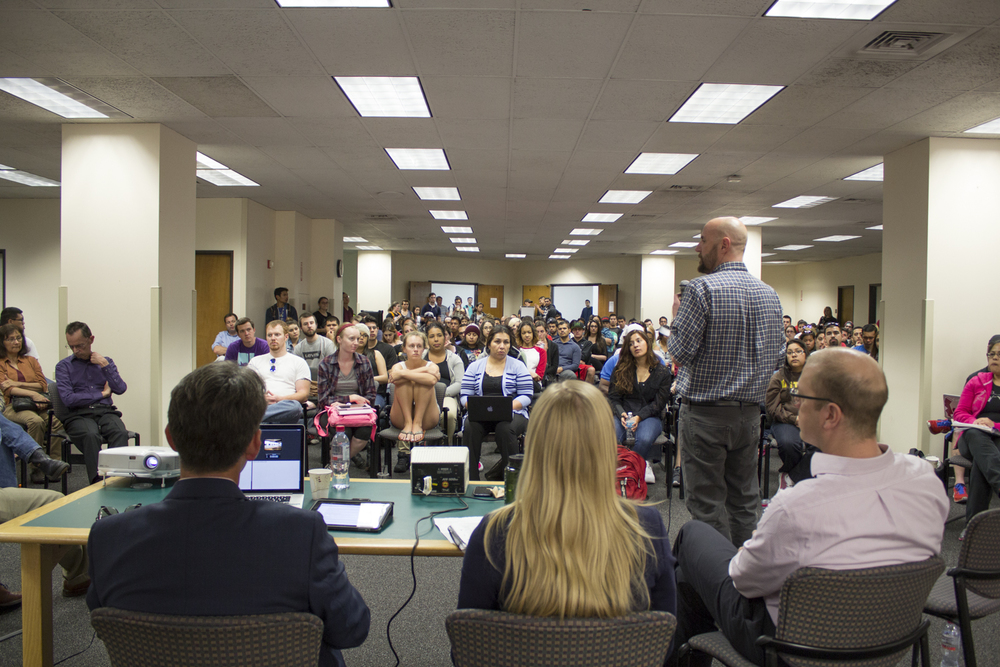
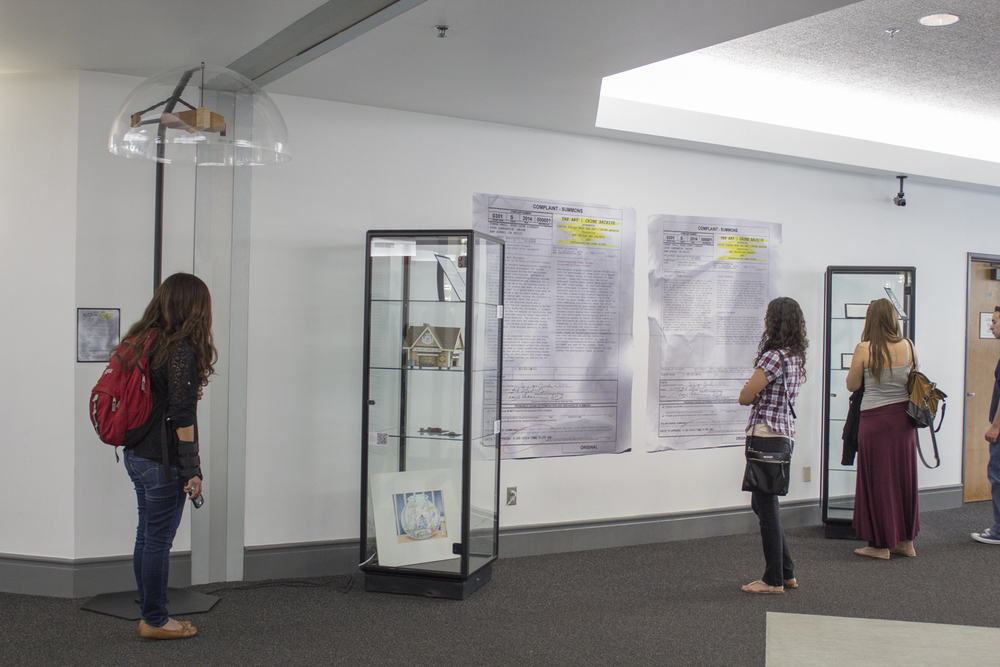
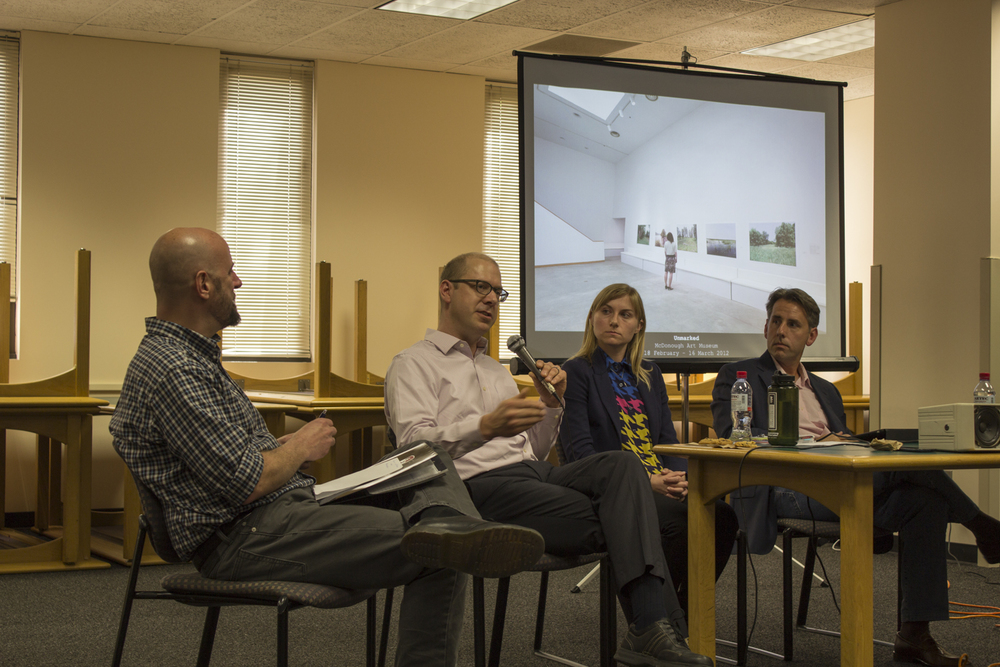
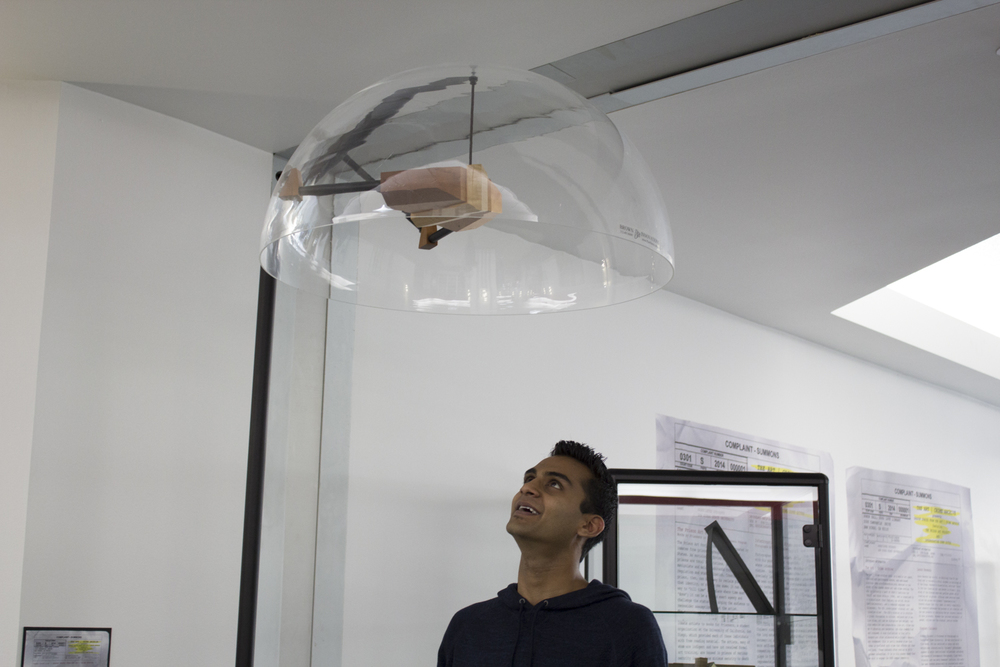
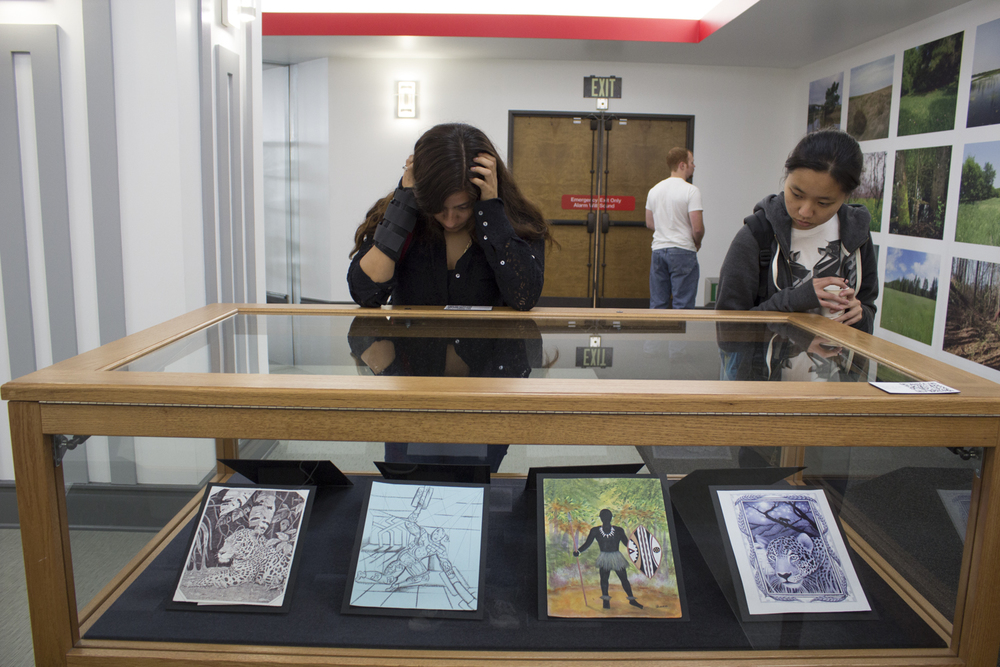

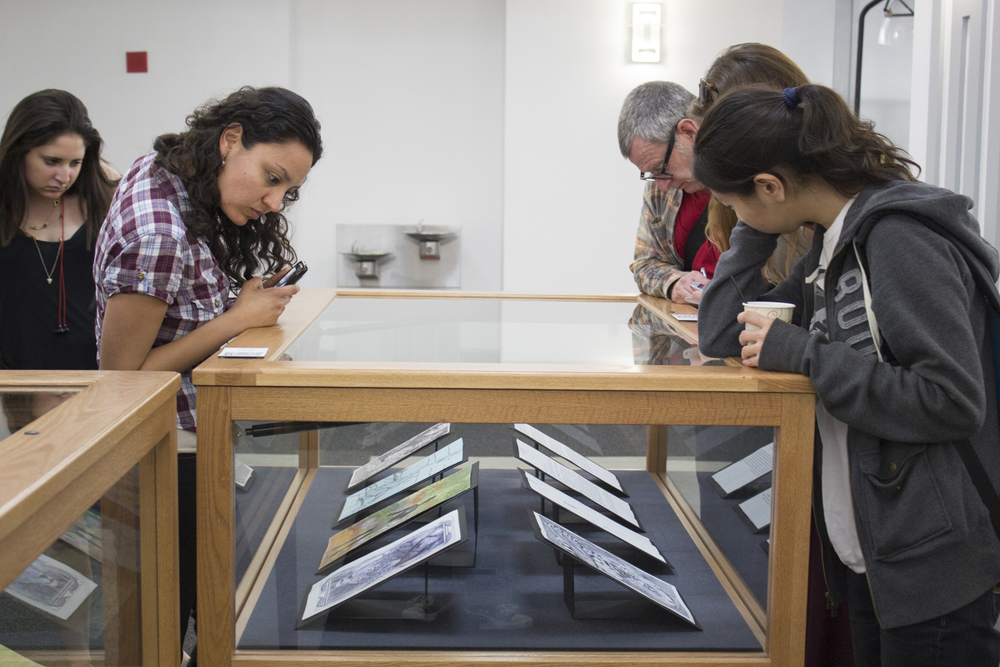
Close to 200 people attended the panel, which I counted as a success given its 2PM start time and the fact that we were only offering coffee and cookies (though they were pretty good cookies). Since our panel stars included a sociologist and a photographer who makes work of an ethnographic nature, I found it reasonable to direct the conversation along sociological lines, looking at how art worlds facilitated (or didn't) the creation of the art object. This way we could talk about the work itself while also shedding light on the mediating devices that shape what we see and how we interpret it.
The discussion unfolded this way:
1) Institutions that support your work
Chalmers discussed the role the commercial gallery, the university gallery and the public museum plays in the exhibition of his work. Pacenco paraphrased Goffman, who labeled prison a "total institution", and then went on to outline how are prison arts programs situated in this "total institution".
2) The Creative Process
A master technician, Chalmers went in depth about how he shot and edited his project "Unmarked", locating his process in relation to his other projects. Pacenco discussed who and what influences the creative process in prisons, noting that like conventional art worlds, there are critics, patrons and collectors among the cellmates. She also talked about how limitations can be good for creativity, how prisoners lack of conventional art materials force a creative approach to media and form.
3) Imagery: The outcome of the creative process
This could have been the subject of the entire panel, given both exhibitions are rich with imagery. For me, it was interesting to hear both panelists trace the legacies of each body of work back to certain archetypes.
4) Epistemology: How does pop culture influence our readings of the art in "Shadow Spaces"?
Both panelists discussed how the work on view defined itself (or could be understood) in relation to the ubiquity of crime scene photos and murder scenes in film and tv (for Chalmers) and cinematic representations of the hyper-masculine subculture of prisons. This was a pretty good way to end the panel because it took us out of the exhibition, figuratively speaking, and into visual and popular culture, and got us thinking about how much of our reality is informed by popular entertainment.